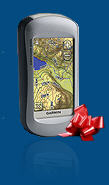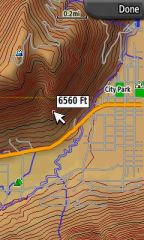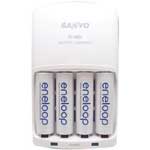
Congratulations on the shiny new toy. Here are a baker’s dozen things to try out that will help you get more from it:
- Use it around town – This is something I highly recommend before trying it in the backcountry. For Garmin units, there are a couple of easy ways to transfer locations to them with the computer cable that comes with most models. You can search for a destination on Google Maps and send it to your GPS, as I discussed yesterday. An even better way to get to know your new toy — um — tool, is to go geocaching. Head over to geocaching.com and set up a free account and then enter your zip code. You’ll be amazed how many geocaches are nearby.
- Backup your GPS – If you have a mass storage device with pre-loaded maps, like the Garmin Colorado or Oregon, connect it to your computer and copy the entire drive to back it up (make sure your computer allows you to see hidden folders). This way you can always recover your maps if you have a problem.
- Let it bake – Wait, don’t head towards the oven. Turn your GPS on and set it under
open sky for 30 minutes. This will give it time to download a full set
of GPS almanac data, speeding subsequent satellite lock. - Protect the screen – Like many people, I’m a huge fan of InvisibleShield. It’s cheap insurance and it works great, even on touchscreens.
- Go green, save green – Rechargeable batteries have seen strong improvements over the years, and many new handhelds are optimized specifically for their use. While it’s handy to have some 15 minute rechargeables
around, I prefer using higher quality low-discharge batteries such as Eneloops
(pictured at right).
- Calibrate it – If your GPS has an electronic compass, it will need to be calibrated every time you change the batteries. Most units with this feature also include a barometric altimeter that can be calibrated. I always note any USGS benchmarks wherever I’m exploring, just for this purpose.
- Update your firmware – You’re much more likely to get new features when you upgrade the firmware on a handheld than on an auto unit. And it’s free! Go to the manufacturer’s support page to see if new firmware is available.
- Get some maps – If your handheld can accommodate maps, their presence will greatly enhance it’s use. For Garmin units, there’s a ton of free maps out there, both street maps and topos.

- Read the manual – Handheld GPS units are quite powerful and complex. At the very least, go through all the menus to check out the possibilities. Reading the manual is highly recommended for power units such as the Garmin 60CSx and the DeLorme PN-40.
- Learn the lingo – This is an old post, but it will help you figure out the difference between tracks and routes.
- View your track in Google Earth – Simply drag the .gpx file into Google Earth.
- Don’t lose it – Many GPS units have a “welcome message” or other first screen that can be customized to give your name and contact info. Should you lose your GPS and someone comes across it, they can return it to you. This is not an option on the Garmin Oregon and Colorado series, but there is a workaround to watermark the information. Another option is to have a Home waypoint, perhaps with your phone number and email address included if an information field is available.
- Don’t lose yourself – After all, there are plenty of ways to get lost with a GPS.



No mention of OpenStreetMap.org? That can only mean you do not know about it yet. Check it out! 🙂
Actually, if you follow the “free maps” in item 8, I do mention OSM. Interestingly enough though, I came across this very cool resource yesterday…
http://downloads.cloudmade.com/
15 minute chargers are only useful if you like killing batteries, why even bother to recommend them?
15 minute chargers are only useful if you like killing batteries, why even bother to recommend them?
You missed my point, why damage your batteries by charging them too fast, its kind of a waste to buy nice batteries like eneloops if your just going to ruin them by charging too fast. Then you also run the risk of the sudden battery failure while out using your gps that happens from the too fast charging so your going to need to take a second set anyway. I can’t stand to wait 15 minutes so I use enloops which don’t need to be charged right before I use them, I charge them when I finish the last trip then they are ready to go for the next.
You’re absolutely right. I would never put Eneloops in a 15 minute charger.
My point is sites like this shouldn’t be recommending those chargers which will damage batteries at all. People are going to buy them based on the recommendations and then when their GPS dies in the woods blame it on rechargeable batteries. Look at whats happened to the figicam industry, its hard to find a good camera now that still takes AA’s. I passed up a couple different GPS models that took lithium ion batteries to find one that does take AA’s so I know I can rely on it but when people start killing batteries with those bad chargers the manufacturers will start hearing that no one wants AA powered devces.
Point taken. I’m actually considering doing a post on some of the chargers / conditioners out there like the Maha and LaCrosse. It would provide a good opportunity to address the issues you’ve brought up.